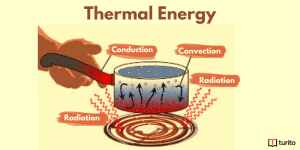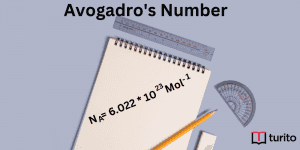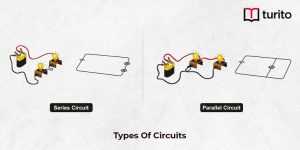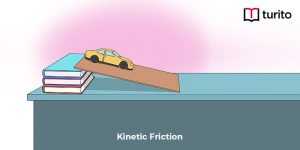Types of Cables
Due to technological advancements, electricity now powers and operates practically everything. Therefore, we need a consistent and steady power supply provided by various cables and wires.
Electric wires and cables are essential in the electric industry for transporting & distributing power to businesses, residences, workplaces, etc. Most fields rely on various electric cables to deliver a consistent power supply.
Electrical cables and wires are sometimes confused, but they are not the same. A wire has a simple electric conductor, while an electric cable has multiple wires encased in a single sheath; however, both are used to transport electrical current. The article covers an overview of the various types of cables, their purposes, and their uses.
What is a Cable?
A cable is a collection of several wires covered in a single sheath, whereas a wire is a single electricity conductor. The use of wires and cables makes it possible for electricity to be used in many different places. Diverse cables are utilized in various settings, including homes and the telecom industry.
The material and applications of the cables are used to distinguish them. Electric cable identification is highly important since it tells you what insulation was used, how many cables are there, and how long they are. The plastic covering or insulation around conducting wires is the most important identification of a cable.
THHN, THWN, THW, and XHHN are some labels or identifications frequently inscribed on cables. Each letter’s meaning for each sort of label is shown below.
T – Thermoplastic insulation is a substance that resists fire.
H – Heat-resistant materials can endure temperatures of up to 167 F.
HH – Highly Heat-Resistant and can endure temperatures of up to 194 F.
W – Wet is suitable for dry environments.
X – Flame-retardant synthetic polymer-based insulation.
N – Nylon-coated, protects against oil and gasoline.
Composition of Electrical Cables
Copper can be used in the composition of electrical cables because it is an inexpensive material. A cable typically consists of three crucial parts: a conductor, an insulator, and a sheath.
Conductor:
Conductors are the elements that allow electricity to move freely through cables. Some of the commonly used conducting elements in cables are aluminum and copper.
Insulator:
Insulators are elements that keep the conductors separated from one another to prevent unintended channels for the flow of current. Insulating materials include synthetic polymers, which safeguard the wires from unexpected damage.
Sheath:
The sheath is an extra layer that shields the cable’s wires from the environment and chemical reactions. The sheath is made of a typical polyvinyl chloride (PVC) material.
Types Of Electric Cable
Main Feeder Wires:
Power is delivered from the service Weather head to the building via the main feeder cables and wires. Solid or stranded 600v THHN cables having a rating of 25% more than the maximum needed load is utilized for this purpose.
Panel Feed Wires:
Power is delivered to the main distribution junction box through the panel feed wires. Typically, these THHN cables are black insulted and have ratings of 25% higher than the maximum load current.
Non-Metallic Sheathed Wires:
In-house wiring uses non-metallic or NM encased wires. It could be made up of two or more insulated conductors, along with an insulated or bare ground conductor.
For added protection, there is a second layer of XLPE plastic sheathing. Electricians currently install interior systems using the most recent version, NM type-B. Both solid and stranded conductors are possible. Conduits can be more easily navigated with stranded conductors.
Single Conductor Wires:
For electrical layout within a home, single conductor cable is the most typical option. It is offered in various gauges, color (to distinguish between phase, neutral, and ground), and solid or stranded conductors. Better connections can be made with a single solid wire, however single stranded wires are simpler to route via conduits. The insulation options for both of them are THW and THHN.
Types of Cables
The market offers various types of cables that can be employed depending on the situation. Diverse types of cables, such as electrical, computer, and power cables, perform different functions; therefore, not all sorts of cables perform the same job.
1. Electrical Cable
An electrical cable is a term for the cable that is used for the transportation and distribution of electrical energy. These cables are used where high voltage transmission is done, and overhead power lines are impractical to utilize. There are various types of electrical cables in the market; however, the following are the most common.
Non-Metallic Sheath Cable
The non-metallic sheath cable is also known as non-metallic building wire or NM cables. Users might find these electrical wires underneath or outside applications.
Underground Feeder Cable
Underground feeder cables resemble NM cables in many ways. The great water resistance of these cables makes them perfect for moist places like pumps, gardens, and air lighting.
Metallic Sheathed Cable
BX, or armored cables, is another name for metallic sheathed cables. These cables are typically used to provide huge machines with electricity. These cables have three copper wires, one of which is used for current, one of which serves as a grounding wire, and one of which serves as a neutral wire.
Multi-Conductor Cable
Multi-conductor cables are those that have more than one conductor in them. These cables have at least two and an utmost of 100 or more twisted pairs of conductors.
Coaxial Cable
Often a coaxial cable with an insulating coating is referred to as a helix. The word “coaxial” refers to a cable that divides a common geometric axis across its two shields. These cables connect video equipment and transmit TV signals.
Unshielded Twisted Pair Cable
The unshielded twisted pair (UTP) cable consists of two wires. These cables help transmit signal and video applications, data networks, telephones, and security cameras. Direct-Buried Cable
Direct buried cables, or DBCs, are specially constructed bundles of coaxial or fiber-optic cables. Before being buried, these wires don’t require any additional plumbing, insulation, or sheathing.
These cables are common due to their moisture, temperature variations from high tolerance to low tolerance, and other ecological considerations for communication or transmission requirements.
Twin-Lead Cable
These are flexible two-wire cables used to transmit information between an antenna and a receiver (such as a TV or radio).
Twinaxial Cable
A twin axial cable is an alternative to a coaxial cable with two conductors instead of one. These cables are typically used in short-range places requiring high-speed signal transmission.
Paired Cable
The paired cable consists of two conductors that are insulated independently. These cables are employed in low-frequency AC or DC appliances.
2. Power Cables
The power cables are typically used in electric power distribution from substations to relevant places. Depending on the situation, these cables might be either underground or overhead. These cables have many conductors shielded by an outside coating called insulation.
Belted Cable
Belted cables have three conductors, are bundled together, and are covered with an insulating paper “belt.”
Screened Cable
Power cables, such as screened cables, are suitable for voltage ranges up to 33KV. In exceptional circumstances, these cables can raise the voltage range to 66KV.
Pressurized Type Cable
These cables employ gas or oil to keep the cable’s pressure above the atmosphere. These cables come in two varieties: oil-filled and gas pressurized.
3. Monitor or Computer Cables
A computer cable is a connector or cord that transports power or data to various devices. One or more wires are included in these cables, which also have a plastic coating. Different types of monitor cables are available in the market, which is discussed below.
HDMI Cable
HDMI stands for “High Definition Multimedia Interface”. A specific computer wire transmits audio and video signals via pictures. There are various types of HDMI cables.
Some of the different types of HDMI cables are as follows:
- Standard (Category 1)
- Standard with Ethernet
- High Speed (Category 2)
- High Speed with Ethernet
- Category 3 (4K)
- Category 3 (8K)
DVI Cable
A video display interface called a DVI (Digital Visual Interface) cable is used to connect an LCD monitor to a video card. One can watch high-quality movies with no problems by utilizing this cable.
VGA Cable
VGA (Video Graphics Adapter) cable is one of the types of monitor cables used to transmit video signals between a computer’s CPU and monitor. These wires are currently found in TVs and projectors.
Ethernet Cable
Ethernet cables are typically used in a wired network to connect various electronic devices like PCs, routers, and switches in a LAN. Although there are more wires in these cables than in telephone cables, they are fairly comparable.
PS/2 Cable
The PS/2 (Personal System/2) cable offers a round connector with six pins. These cables are mostly used to link the computer system’s keyboard and mouse.
Audio Cable
Headphones and earphones are connected to the system using audio wires. These commonly connect any speaker to a PC sound card, a small CD player, or a compact stereo audio device.
USB Cable
The USB (Universal Serial Bus) is a widely used and accepted cable to join various accessories to a computer device. There are different types of USB cables. These are as follows:
Different types of USB cables,
- USB Type A
- USB Type B
- USB Type C
MIDI
MIDI (Musical Instrument Digital Interface) cable performs panning, music data, vibrato, event messages, etc. People can use these cables to link a MIDI keyboard or synthesizer to the computer.
Conclusion
A cable is a collection of several wires covered in a single sheath, whereas a wire is a single electricity conductor. The use of wires and cables makes it possible for electricity to be used in many different places.
Different types of cables are utilized in various settings, including homes and the telecom industry. The material and applications of the cables are used to distinguish them.
Frequently Asked Questions
1. Name the different types of cable connectors?
Twisted-pair, fiber-optic, and coaxial cable connectors with twisted pairs are the three types of cable connectors.
2. Name the most common types of charging cables?
The most popular types of charging cables that people use regularly are listed below. These are listed below:
- USB-A. It is a basic connector, present on the one end of practically every USB cable.
- USB-B. This older connector isn’t utilized as frequently as it formerly was.
- Mini-USB. It is a smaller connection type that works well for mobile devices, as the name would imply.
- Micro-USB.
3. Highlight the advantages of using electric cables.
The benefits of electric cables include the following.
- Underground electricity cables may minimize the visual impact.
- These are less impacted by various weather conditions.
- Improves the supply’s dependability.
- Shielded twisted pair cable has a high capacity, easy installation, and is less expensive than coaxial and optical fiber.
- Coaxial cables are more affordable and have a larger bandwidth than FOC or fiber optic lines.

Relevant Articles
Understanding Thermal Energy: What It Is and How It Works
Thermal energy is essential to our daily lives, from warming …
Understanding Thermal Energy: What It Is and How It Works Read More »
Read More >>Avogadro’s Number: Meaning, Importance, and More
Introduction The concept of measuring the microscopic particles that make …
Avogadro’s Number: Meaning, Importance, and More Read More »
Read More >>Kinetic Friction – Definition, Laws, Types
Kinetic Friction Kinetic force is a force acting between two …
Kinetic Friction – Definition, Laws, Types Read More »
Read More >>




















Comments: